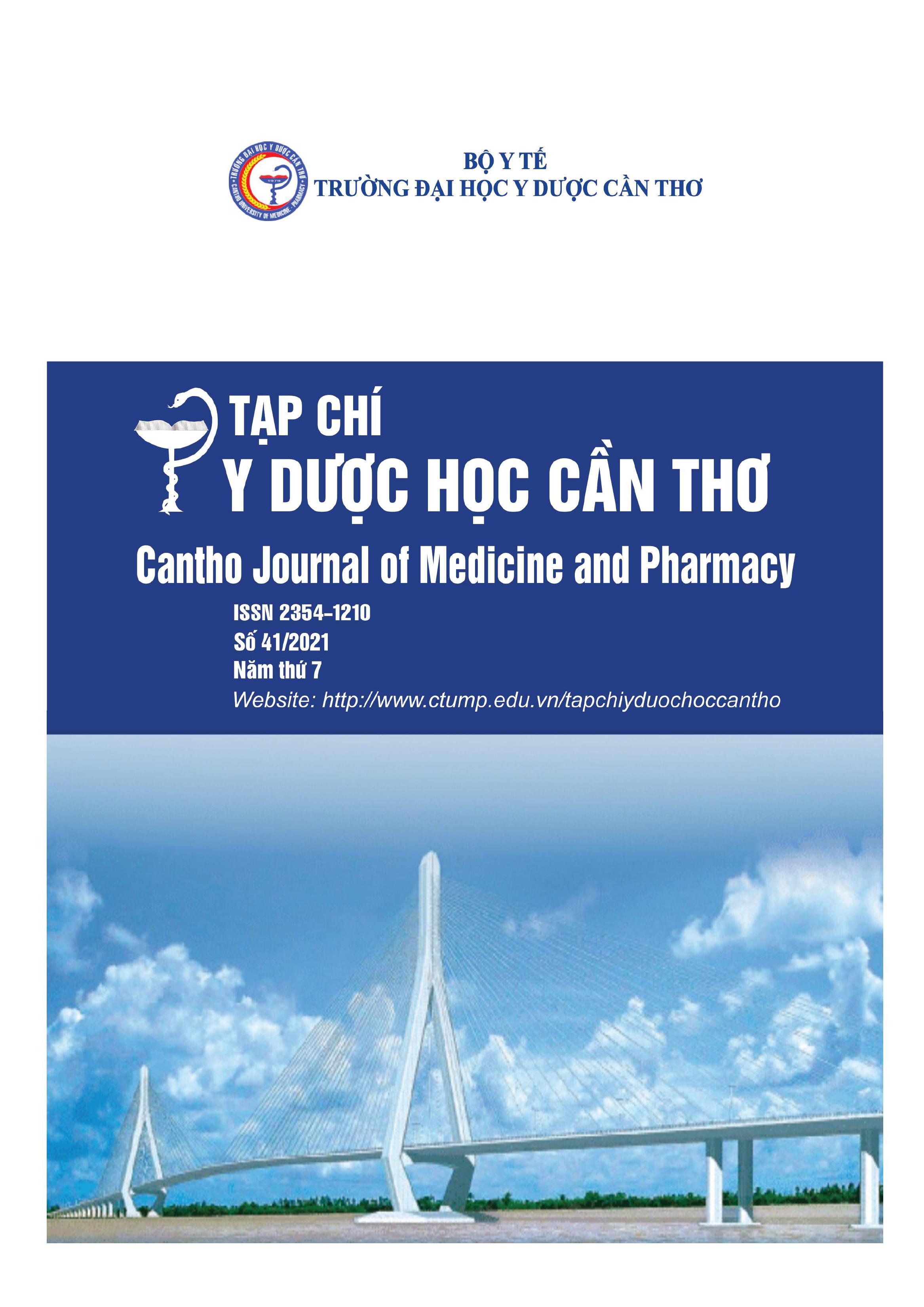THE CLINICAL FEATURES, X RAY AND EVALUATE OF THE TREATMENT OF MANDIBULAR FRACTURES USING MINIPLATE AT VINH LONG GENERAL HOSPITAL IN 2020-2021
Main Article Content
Abstract
Background: Nowadays, due to the increase in traffic accidents, oral maxillofacial injuries have become more common. Besides, mandibular fractures are relatively common in facial trauma (47-61%) which affects entirely the function of eating, speaking and facial aesthetics. There are several therapies for mandibular fracture treatment. However, the application of miniplate with small screws is an advanced method, it is easy to utilize and to achieve the optimal esthetics which can approach the fracture through intraoral surgery. Therefore, this study is to evaluate the results of treatment of mandibular fractures using miniplate. Objectives: To investigate the clinical features, X-ray and to evaluate outcome of the treatment of mandibular fractures using miniplate. Materials and methods: A cross-sectional prospective study was conducted in 51 patients with mandibular fractures. Results: The common clinical features were malocclusion (90.2%) and tenderness (100%). Fractures of mandibular symphysis were the most rate (47.1%). At 3 months after operation, 11.8% of patients had numbness of the lower lip or chin; there was no mouth opening limitation recorded. Conclusion: The application of miniplate with small screws for treatment of mandibular fractures has supported patients significantly in wound healing and provided the best conditions for functional recovery.
Article Details
Keywords
Clinical features, mandibular fractures, miniplate, X-ray
References
2. Văn Quốc Hưng (2014), “Nghiên cứu đặc điểm lâm sáng, X quang và kết quả phẫu thuật gãy xương hàm dưới vùng cằm do chấn thương”, Luận án chuyên khoa II, Đại học Y Dược Huế.
3. Trương Nhựt Khuê, Nguyễn Bắc Hùng, Lâm Hoài Phương (2012), “Nghiên cứu đặc điểm gãy xương hàm dưới và đánh giá kết quả điều trị tại Bệnh viện Đa khoa Trung ương Cần Thơ”, Luận án Tiến sĩ học, Viện nghiên cứu Y Dược Lâm sàng 108.
4. Hồ Hoài Nam (2015), “Đánh giá kết quả phẫu thuật gãy xương hàm dưới vùng cằm bằng nẹp thanh chống thẳng”, Luận án chuyên khoa II, Đại học Y Dược Huế.
5. Trần Linh Nam (2017), “Nghiên cứu đặc điểm lâm sàng, X-quang và đánh giá kết quả phẫu thuật điều trị gãy thân xương hàm dưới bằng nẹp vít nhỏ tại Bệnh viện Đa khoa Trung ương Cần Thơ, năm 2016-2017”, Luận án chuyên khoa II, Trường Đại học Y Dược Cần Thơ.
6. Trần Minh Triết (2018), “Nghiên cứu đặc điểm lâm sàng, X quang và đánh giá kết quả phẫu thuật điều trị gãy thân xương hàm dưới bằng nẹp vít nhỏ tại Bệnh viện Đa khoa Trung ương Cần Thơ, năm 2017-2018”, Luận án chuyên khoa II, Trường Đại học Y Dược Cần Thơ.
7. Phan Văn Trương (2015), “Nghiên cứu kết quả điều trị gãy xương hàm bằng nẹp vis Titanium tại Bệnh viện Đa khoa Quảng Nam”, Đề tài nghiên cứu khoa học cấp cơ sở, Bệnh viện Đa khoa Quảng Nam.
8. Amrish Bhagol, Virendra Singh, Ruchi Sigh (2013), Management of Mandibuar Fractures, A Textbook of Advand Oral and Maxillofacial Surgery, pp.385-414.
9. Gadicherla Srikanth (2016), Mandibular Fractuers and Associated Factors at a Tertiary Care Hospital, Arch Trauma Res, Vol 5, pp.30574-39581.
10. Melike Oruc (2016), Analysis of Fractured Mandible Over Two Decades, The Journal of Craniofacial Surgery, Vol 27, pp.1457-1461.
11. Stylianos Zanakis (2015), Tooth in the line of angle fractures: The impact in the healing process: A retrospective study of 112 patients, Journal of Cranio-Maxillo-Facial Surgery, Vol 43, pp.113-116.


